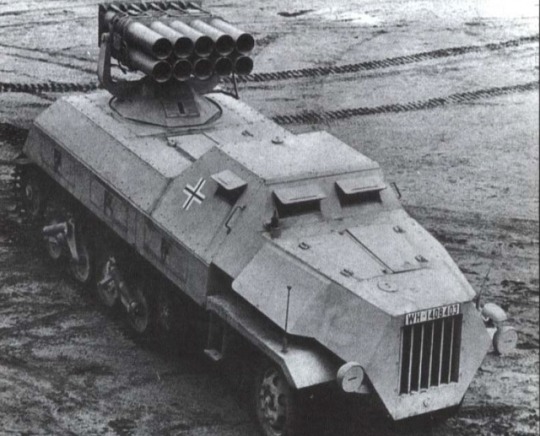Photo

William Patrick Stuart-Houston, a UK born half nephew of Adolf Hitler fighting against his uncle’s while being in US Navy. Yep, you read it right.
You can read more here: https://en.wikipedia.org/wiki/William_Stuart-Houston
34 notes
·
View notes
Text
I am back!
Pretty sure this year this account turns 10 years old! And I didn't post in at least 4 years!
11 notes
·
View notes
Photo
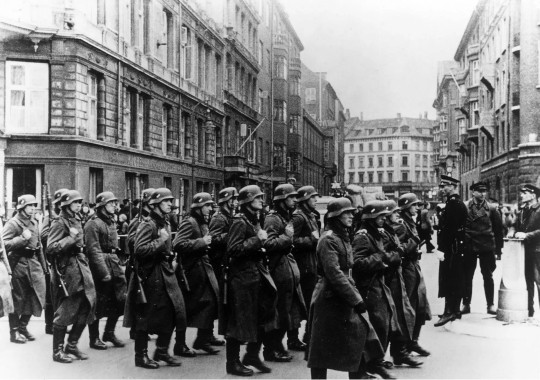
German soldiers in Copenhagen marching April 20th, 1040
55 notes
·
View notes
Text
How many people still use Tumblr?
I logged for the first time in a year. Y’all still interested in the content I provide or maybe I should make a tiktok instead (since it’s where everyone is nowadays).
43 notes
·
View notes
Text
Hi! Really need help with homework and thought since I have so many followers here, you guys might help me answering a few questions. PLEASE PLEASE DO IT NOW. IT’S DUE TUESDAY AND STILL HAVE TO WRITE A WHOLE RESEARCH ABOUT ANSWERS. You can write direct messages to me too.
ORGANIZING CLOSET:
1. What makes you want to organize your closet better (most important question)?
2. How do you organize your closet (ex: shirts, pants, ties, t-shirts). Where do your shorts, underwear, socks go?
3. Do you organize each section by color or as long as the one type of clothes is together you don’t care?
4. Do you organize your closet often?
5. Do you get help with organizing your closet?
6. Does anything else end up in your clothing closet beside the clothes? (Ex: shoes, blankets, etc)
7. What challenges do you usually encounter when organizing your closet? (Ex: time consuming, patience, kids, etc)
8. Do you think an app will help you with your problems to organize the closet, so it’s faster and helps your with your daily routine?
9. How many items do you have approximately?
10. Do you need help creating/putting together outfits or no? Or you just mishmash whatever?
11. What is your favorite color to wear? Do you put that color in most easy reachable place in your closet?
12 notes
·
View notes
Photo

“Two U.S. Marines direct flame throwers at Japanese defenses that block the way to Iwo Jima’s Mount Suribachi on March 4, 1945. On the left is Pvt. Richard Klatt, of North Fond Dulac, Wisconsin, and on the right is PFC Wilfred Voegeli.”
(USMC)
500 notes
·
View notes
Video
youtube
The “Stahlhelm” - The German Steel Helmet in both World Wars.
Includes footage of me showing the 1916, 1935 & 1942 variants.
171 notes
·
View notes
Photo

All comes to an end. This is my last post on this blog. Good bye.
543 notes
·
View notes
Photo
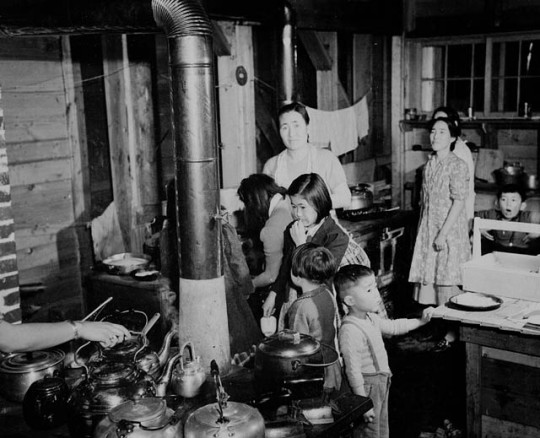

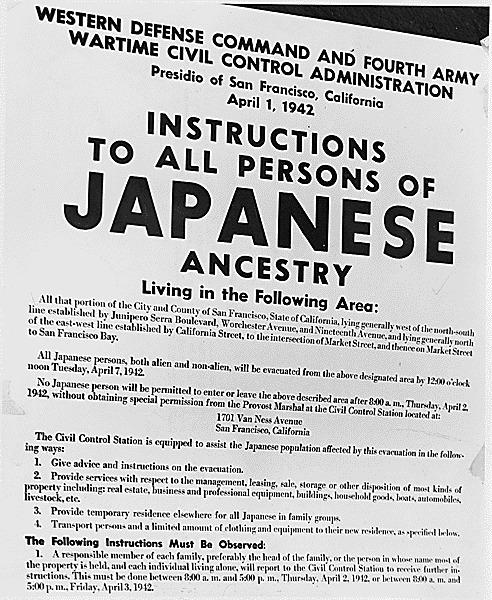
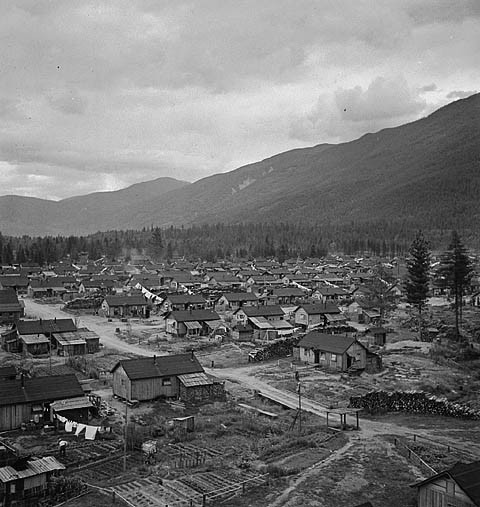
Japanese Internment in Canada during World War II.
I had always known about Japanese internment in the United States, having studied World War II as a child and having taught lessons on it when I was a teacher. Today it’s a topic that’s becoming more and more common in the popular consciousness of America. However a topic I recently learned about is quite surprising, something I had never known before. Canada also interned people of Japanese ancestry during World War II.
The road to Japanese internment in Canada began only one day after the attack on Pearl Harbor. On December 8th, 1941 the Canadian government ordered the impounding of 1200 Japanese Canadian owned fishing vessels, a move that was seen as a defense measure. From here a number of measures were passed which served as stepping stones to internment. On December 17th, 1941 all persons of Japanese descent were required to register with the Royal Canadian Mounted Police. On the 29th of February, 1942 the Defense of Canada Regulations were amended to forbid Japanese Canadians from owning land or growing crops. On the 26th of February, curfews were instituted, and Japanese Canadians were forbidden from owning motor vehicles, cameras, radios, firearms, ammunition, and explosives. Finally, on March 4th, the War Measures Act was amended to evacuate Japanese Canadians from the Pacific Coast.
Altogether around 27,000 people, 14,000 of which were native born Canadians and some of which were veterans of World War I, were forcibly removed from the Pacific Coast. Most were interred in hastily built camps in the interior of British Columbia. Around 2,000 were forced to work in road camps, basically mobile camps that performed maintenance on roads, railways, or other transportation infrastructure. Another 2,000 were forced to work on beet farms in the prairies. All property that couldn’t be carried was seized and sold off for pennies on the dollar. This included land, houses, businesses, boats, vehicles, various valuables and personal items. Financial items were also seized such as stocks and bonds, while bank accounts were frozen and seized. The money raised by liquidating seized property was used to fund the internment program.
Living conditions in the camps were rough. Many of the camps consisted of hastily built shacks and shanties,some were tent cities, some were ghost towns left over from long abandoned logging operations, while some were nothing more than farm buildings and animal stalls. The only item the government provided for internees was a potbellied stove. Everything else, including food, clothing, and toiletries had to be bought from special government commissaries. Since the internees had all of their property and assets seized, they often had no choice but to take part in menial work projects in order to feed and clothe themselves and their families. The Red Cross even had to bring in food shipments so that those who couldn’t work, such as the elderly or infirm, wouldn’t starve.
The war ended with Japan’s official surrender on September 2nd, 1945. However, newly freed internees found that they couldn’t return home. In August of 1944 Prime Minister Mackenzie King announced that Japanese Canadians who were to be repatriated after the war were forbidden from living west of the Rocky Mountains. This was actually a part of government policy to resettle Japanese Canadians, and drew popular support from Canadian voters. Parliamentarian Ian Mackenzie stated,
“It is the government’s plan to get these people out of B.C. as fast as possible. It is my personal intention, as long as I remain in public life, to see they never come back here. Let our slogan be for British Columbia: ‘No Japs from the Rockies to the seas.’”
Newly freed internees found that they were legally forbidden from returning home but had to move east to new homes in eastern part of the country. Some refused to move east and were deported as a result. Most internees were unable to move east, having no money, means of transportation, or personal possessions, and likewise were forcibly deported. Altogether 3,964 Japanese Canadians were deported after the war. Even the 200 Japanese Canadians who served in the Canadian Army during World War II returned to find that they had no rights, could not return home, and risked deportation. The policy of forbidding Japanese Canadians west of the Rockies remained in place until 1949.
In 1988 Prime Minister Brian Mulroney made an official apology for the internment program. All Japanese Canadians affected were awarded a $21,000 compensation package.
2K notes
·
View notes
Photo
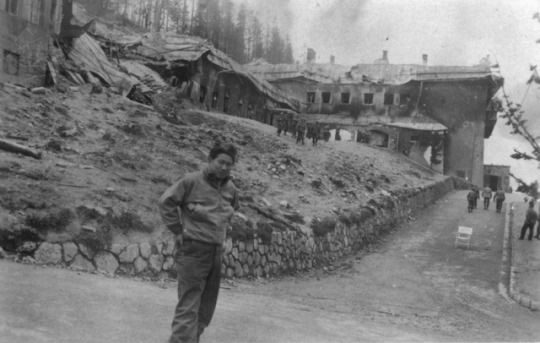
Japanese-American soldier in Berghof, Hitler’s mountain retreat in the Alps shortly after surrender of Nazis.
218 notes
·
View notes
Photo

British factory workers posing with newly built Valentine Mk I tanks destined for the USSR, 1941.
287 notes
·
View notes
Photo

The Ideal German Soldier ... or was he?
That was the name Werner Goldberg was given by a German newspaper in 1939, shortly after WW2 began. Participated in invasion of Poland alongside his childhood friends. Irony is ... he was half Jew. He was blond and blue-eyed. His image was even used for recruitment posters. In 1940 he was expelled from Wehrmacht for being a Jew. He went to work for a clothing company that was originally owned by a Jew and a German and supplied clothes to Army and Navy. In 1942, his father who was 100% Jew, was admitted into hospital, where Gestapo found about his heritage and sent him to a Jewish hospital/prison that was sending people away to Auschwitz. On Christmas eve, the guards at the prison were drunk and Werner managed to take his father away. Soon after his father got caught again and was scheduled for deportation. Werner told him not to show up at the deportation time (as we now know, many Jews willingly went away, thinking they only going to prison camps and not death camps). Werner’s father, alongside Werner himself, was the only surviving member of Goldberg’s side of the family.
Werner died in 2004 in Berlin. He was a part of documentary called Hitler’s Jewish Soldiers produced by Larry price.
752 notes
·
View notes
Photo

A damaged Sherman being repaired during the aftermath of the British Disaster at Villers-Bocage, June 14th, 1944.
315 notes
·
View notes
Photo

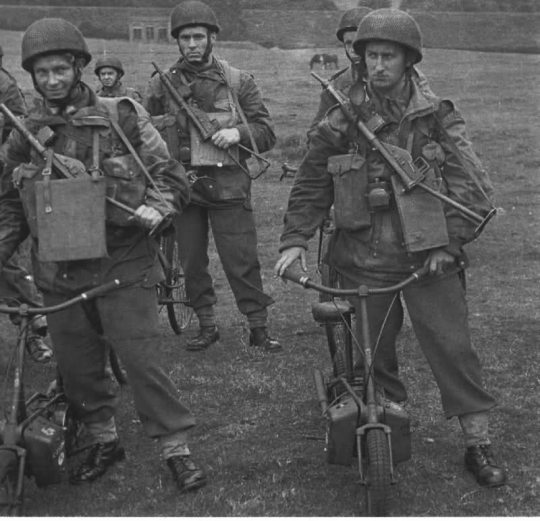


War Scooter — The Excelsior Welbike
Looking more like a mini motorcycle for a child than a piece of military equipment, the Excelsior Welbike was a scooter designed to give British paratroopers extra mobility during World War II. Originally the Welbike was intended for use by Special Operations Executive, the secret British agency founded to help resistance groups under German occupation. However the SOE found little use for the scooters, so the were issued to the British 1st and 6th airborne divisions as well a the Royal Marines and other commando units.
With its small size, the Welbike was perfect for airborne operations. In fact it was so small that one could fit in a standard British parachute airdrop container. It featured a 98 cc (6 cu inch) two stroke engine with a one gallon gas tank, which gave it a range of 90 miles. Fully fueled, it only weighed 71 pounds. 3,641 were produced from 1942 until 1945. After the war most were sold to civilians or exported to the United States.
The development and use of the Welbike inspired the Americans and Germans to create their own airborne scooters as well. In 1947, the inventor of the Welbike, Lt. Colonel John Dolphin, retired from the military and founded Corgi Motorcycle Co LTD and continued production for the civilian market. Another 27,050 were produced by Corgi Motorcycle Co. between 1947 and 1954.
953 notes
·
View notes
Photo

Hellcats awaiting their flights on Espiritu Santo Island, one of the island in current Republic of Vanuatu (1944)
245 notes
·
View notes
